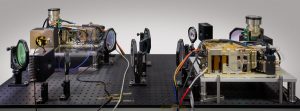
On June 25, SpaceX is to launch a Falcon 9 rocket that will carry the Space Development Agency's (SDA) first satellite missions--Mandrake II, the Laser Interconnect Networking Communications System (LINCS), and Prototype On-orbit Experimental Testbed (POET). The SDA missions involve two Astro Orbital-built Mandrake II cube satellites with an SA Photonics payload, two General Atomics LINCS microsatellites to demonstrate space-to-air communications with an MQ-9 Reaper drone, and a Loft Orbital satellite carrying the POET payload, which is to demonstrate a…














